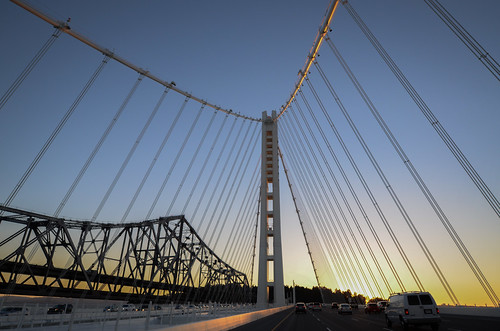by Brian Leubitz
When you spend $6.5 billion on something, you expect it to last a few years, even if it is one of the world’s widest bridges. (That $6B+ price tag also set a Guinness record!)
Caltrans officials downplayed the failure, stressing that 99 percent of the 407 rods that underwent testing passed, and said that the cause will need to be determined by further tests in a materials lab. But the failure of a second rod leaves the possibility that more rods could eventually fail.
“Hydrogen embrittlement and corrosion occurs over time,” said Steve Heminger, executive director of the Metropolitan Transportation Commission and one of three people on a committee overseeing the east span construction. “They could last 20 years or 50 years, but with this bridge, we want 150 years.” …
“This bridge is safe, and it’s going to perform well in a major seismic event,” he said. “The engineers are saying it’s terrific.”
Some independent experts are not convinced, however.
“That would suggest it did not strip, but that it fractured,” said Bernard Cuzzillo, a Berkeley mechanical engineer. “Because a fracture results in a sudden release of elastic energy, which causes a pop or a bang sound. Stripping is a slower failure and typically does not result in an audible sound.” (SF Gate)
Tollpayers will now be paying for a few million dollars worth of additional testing to give us all confidence, but doubt abounds. The rods are intended to grant additional stability during a seismic event, so perhaps it is natural that even one failure brings about a little nervousness in drivers using the bridge.
But the one certainty we have with the new eastern span is that this won’t be the last we hear about corrosion and botched grouting.

